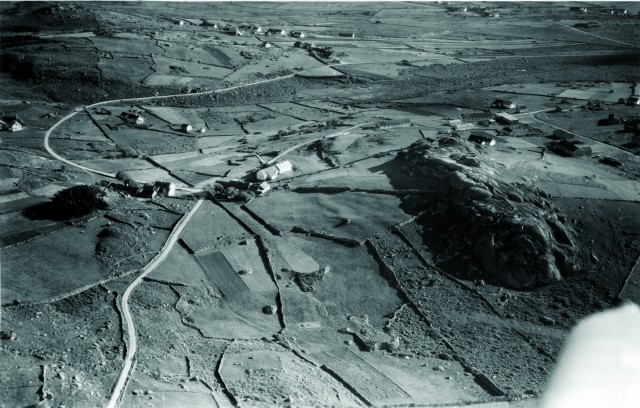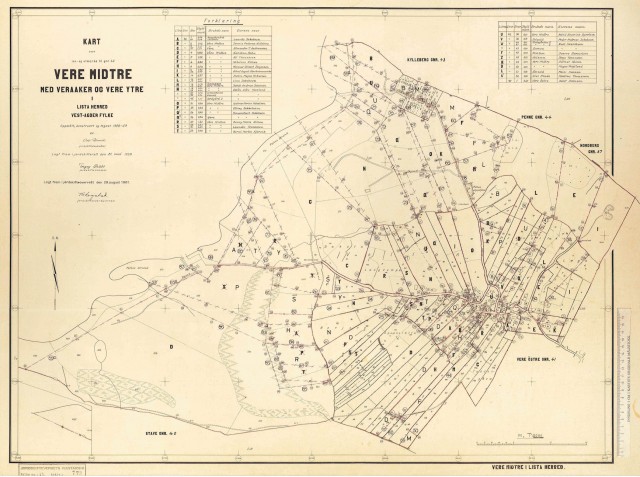Land division and exchanges
There were few places in the country were the land division became as extensive and as complicated as it did at Lista. Clustered farm-yards and many small plots made it difficult to modernise farming. The property boundaries had to be changed before new methods, machines and tools could come into use.

Especially in the 1700s the number of farm divisions in the south of Norway was on the increase. A decrease in child-mortality and a steadily improving public health lead to a growing population. Inheritance and change of ownership divided the arable land into more numerous and smaller plots. Everyone was to have their share, of both the good soil and the bad. Other rights like access to the sea also had to be divided. The result of this was long and narrow plots stretching down to the shore-line.
Land exchange has long traditions in Norway.
At Lista this was done on a large scale in the 1800s. Clustered-yards were dissolved, houses moved, boundaries adjusted and stone-walls torn down. This facilitated are more efficient agriculture.
At Vest-Lista land exchange did not happen on such a scale and larger parts of the old landscape is intact.

"The walls criss-crossed the landscape, and bore remembrance of the marks a knife would leave in a cream cake."
Quote from "The Swede" by Arne Espelund